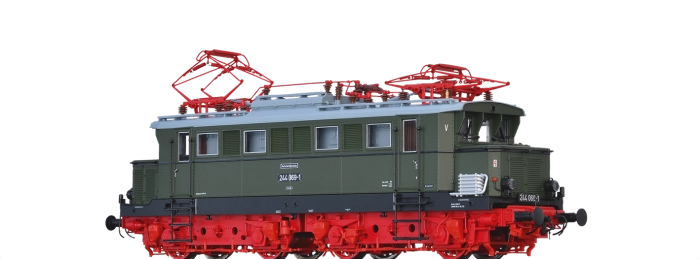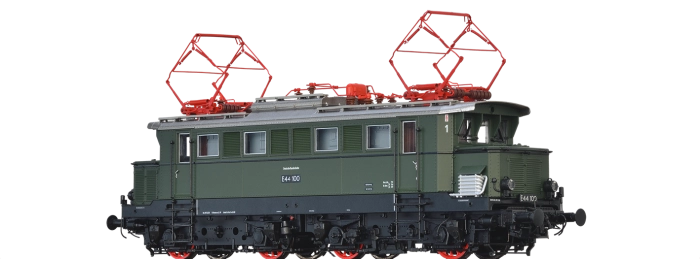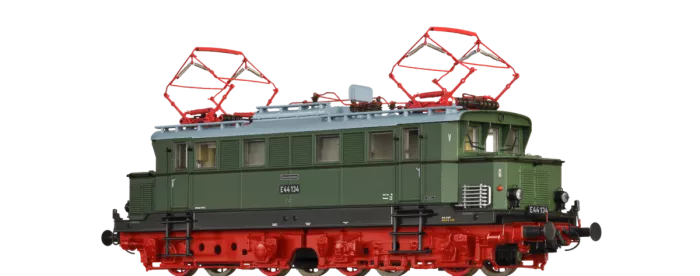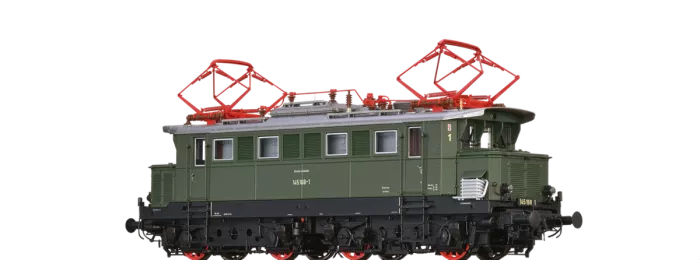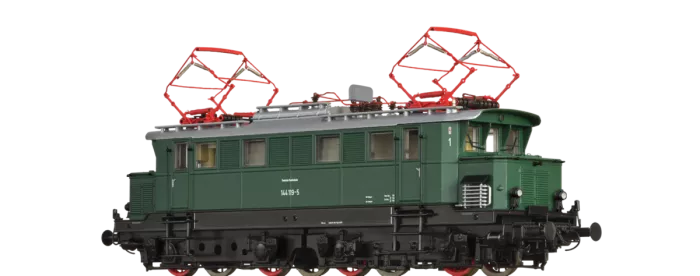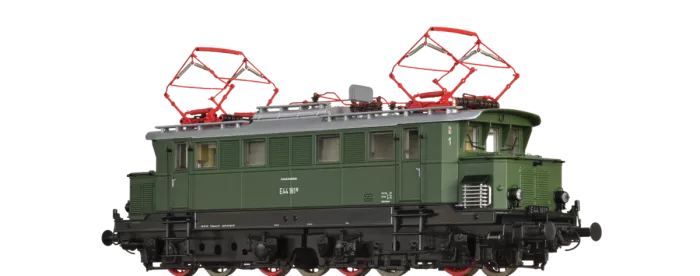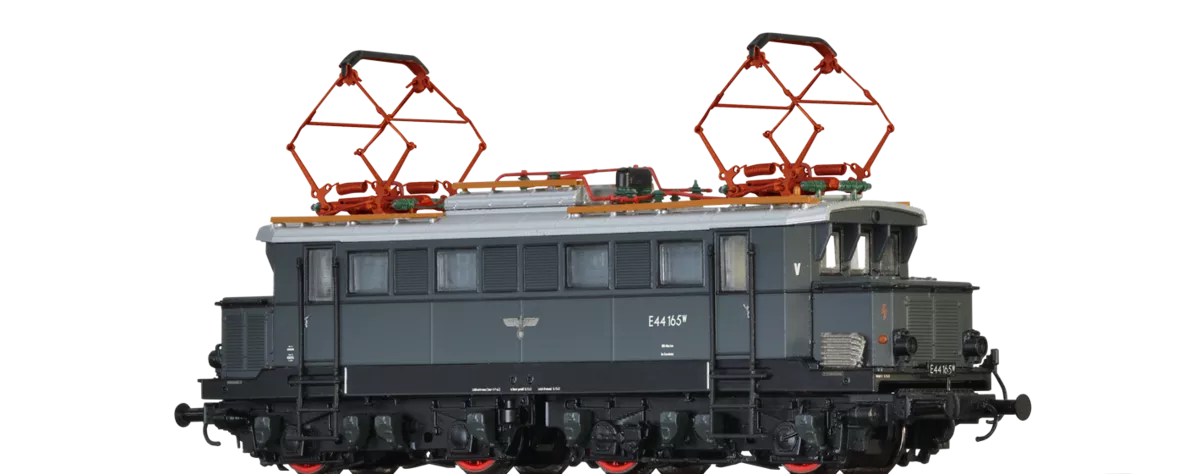
Electric Locomotive BR E44W DRG
Road no.: E44 165W
Delivery date: Q4/2025
Model details
- Analog models with Next18 interface
- Detailed body
- Fine engravings and rivets
- Many extra mounted parts, such as handles, ladders and multi-part cooling coil
- Reproduction of the driver´s cab
- Precise replica of the bogies
- Separately mounted brake cylinder, brake pull rod, sand box and cowcatcher
- Precise replica of the roof, versions with normal and extended roof
- Prototypical roof-fittings, with many individually mounted parts
- Free-standing roof lines
- Various insulators
- Different main switch types
- Finely detailed pantographs
- True-to-original length of the roof walkways
- Bogie with three-point support
- Fine paintwork and painting
- 3rd front light can be switched on or off also in analog mode
- Driver's cab with LED lighting and in the sound version also in the machine room
- NEM-standard short coupling
- Soundversion: all light functions can be switched on and off in digital mode, also machine roof lighting; optimal motor and load control for perfect running characteristics; noiseless 16-bit sound with up to 8 independent channels thanks to latest sound technology and excellent sound characteristics; compatible with all established digital systems (DCC, Motorola, SX1 und SX2); sound decoder on the main circuit board
- Modell: pantograph type SBS 39; main swith type R 62; with 8 sand boxes; with dynamic brake for the first time in a model (deviating photo)
Downloads
Info about the original
At the end of the 1920s, it became clear that Deutsche Reichsbahn Gesellschaft (DRG) would have to acquire new electric locomotives, among other things, to accelerate its goods traffic. The need to increase maximum speeds to at least 80 km/h could not be met with the most recently purchased E77 and E75 series since the standard drive technology by means of bars and additional trailing wheelsets did not allow for higher speeds. The good experiences from abroad and with the two Bavarian EG 1 with the Bo’Bo’ two-bogie locomotives convinced the DRG to deviate from single-frame construction as well. The arrival of the world economic crisis in 1929, however, put a halt to this plan by interrupting the cost- intensive electrical expansion of the lines, thus eliminating the need for electric locomotives. The locomotive industry in Germany, however, feared falling behind current developments due to this pause in procurement. They therefore began developing a cheaper design at their own costs. Thus a prototype with the designation E44 70 was created at the Siemens-Schuckert Works (SSW) under the general management of Walter Reichel. This prototype later became the E44 001. SSW was able to integrate its experience with electric arc welding from its production of components for electric generators into locomotive manufacturing, which led to significant savings in materials and manufacturing costs. The prototype’s positive test results convinced DRG to further develop the new locomotive type into a universal locomotive. The result was Germany’s first two-bogie electric locomotive produced in series, which can safely be categorised as the prototype for the subsequently developed standard electric locomotive of Deutsche Bundesbahn (DB). Due to the war the delivery of the locomotives, which were registered for 90 km/h, stretched from 1933 into the postwar period, and Henschel only handed over the last one, a E44 187G, to DB on 29 November 1954. The predominant distribution to central and southern Germany led to the fact that approximately 100 locomotives remained in West Germany and around 50 in East Germany after the war. The most conspicuous design changes at DB were the lengthening of the roof shield for accident prevention and the Indusi (inductive train control system) equipment. The last locomotives, however, remained in service until 1985. Of the original 187 locomotives, only 21 still exist today, partially as museum locomotives and as spare parts donors.


